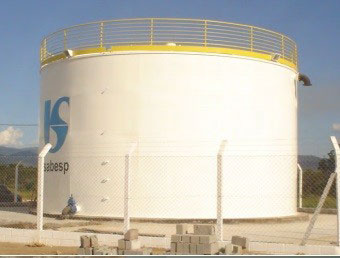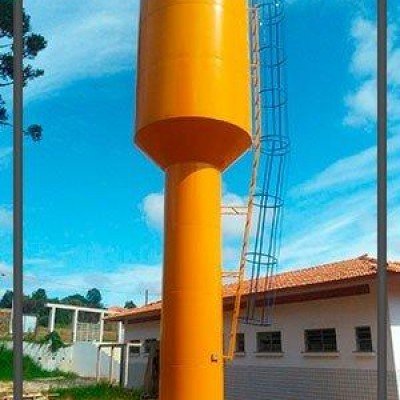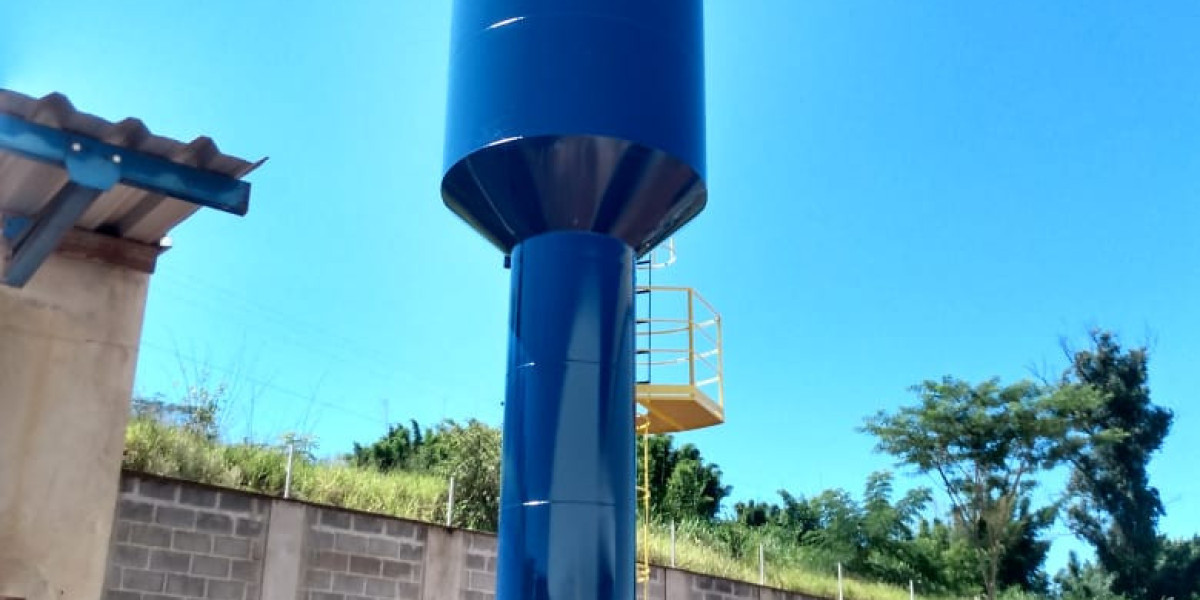 All of our tanks are installed by Aquamate educated and authorized technicians, that means you'll have the ability to be certain that your metal water tank will stand the test of time. The galvanized steel tanks are G-90 grade 20 gauge metallic made in the USA. After the tank is constructed, a paint / epoxy lining is applied to the interior of the tank to offer a protective barrier between the water and the metal itself. This product is FDA accredited for potable (drinking) water applications and ReservatóRio MetáLico Tipo TaçA PreçO is ANSI / NSF 61 licensed. Stainless metal is widely thought-about superior to different supplies within the classes of energy, sturdiness, and hygiene. Manufacturing tanks from stainless steel maximizes your tank’s expected life expectancy.
All of our tanks are installed by Aquamate educated and authorized technicians, that means you'll have the ability to be certain that your metal water tank will stand the test of time. The galvanized steel tanks are G-90 grade 20 gauge metallic made in the USA. After the tank is constructed, a paint / epoxy lining is applied to the interior of the tank to offer a protective barrier between the water and the metal itself. This product is FDA accredited for potable (drinking) water applications and ReservatóRio MetáLico Tipo TaçA PreçO is ANSI / NSF 61 licensed. Stainless metal is widely thought-about superior to different supplies within the classes of energy, sturdiness, and hygiene. Manufacturing tanks from stainless steel maximizes your tank’s expected life expectancy.Standards and quality certifications
Our unique mixture of lightweight, heavy duty galvanized, corrugated metal wall panels and versatile polyethylene tank liner allows Aquamate to supply premium galvanized metal water tanks for sale at a very aggressive worth. American Tanks stainless steel water tanks are available in round and rectangular orientations, showcasing a refined, patterned external surface for a extra aesthetically pleasing asset. With a superior end, most different metal varieties aren't any match for stainless steel’s shimmering, abrasion-resistant gleam. Our metal water tanks are available in nine commonplace sizes, from 130″ to 512″ diameter, providing you with a spread of sizes and volumes to swimsuit your home, enterprise, ranch or farm’s necessities. Below you will discover some normal sizes we offer for our vertical metal water storage tanks.
Inicialmente, los castillos dependían de fuentes naturales como ríos, manantiales o pozos, pero con el tiempo se desarrollaron sistemas mucho más elaborados que incluían pozos artesianos, acueductos y cisternas para garantizar un suministro constante de agua. Torre rectangular o poligonal con gruesos muros, poca altura y paredes en talud, que se destaca al exterior en el acercamiento de dos lienzos de muralla. Se identifica por estar destinada a la defensa del fuego artillero, y es una evolución del cubo en las esquinas de las murallas para no enseñar ángulos fallecidos de tiro en la defensa de una fortaleza. Se generaliza a partir del siglo XVI, siendo el origen de una secuencia de técnicas protectoras que continuarán vigentes hasta el siglo XIX. Elemento defensivo de obra consistente en substituir el adarve transitable en un muro por un plano inclinado muy pronunciado, incluso vertical, unos metros antes que dicho muro se una a otra obra diferente y defensivamente independiente. Con este sistema se dificulta el ingreso a esa otra sección de la fortificación aunque el enemigo come el adarve. Se puede utilizar en las murallas de una población respecto a su castillo o en el muro de un castillo con respecto a la torre principal.
Aguas profundas: ingeniería hidráulica en los castillos medievales
Otro elemento de defensa en los muros eran los matacanes, que consistían en balcones o espacios salientes lugar desde donde se arrojaban materiales como piedras y principalmente agua o aceite hirviendo. Las torres, que inicialmente fueron de planta cuadrada, pasaron enseguida a tener planta redonda, puesto que al no tener ángulos resultaban más resistentes a los asaltos y además de esto no dejaban ángulos muertos a la guarnición que defendía la fortaleza. La manera de entrar al castillo era habitualmente con puertas en recodo hacia la izquierda, para dejar al descubierto el lado del invasor que no estaba protegido por su escudo. Los castillos medievales tem uma espiada no esses caras solo eran imponentes estructuras defensivas, sino también complejos sistemas que incorporaban ingeniería hidráulica para asegurar su desempeño. Estas fortalezas, construidas en una temporada donde el acceso al agua era vital, implementaban complejos sistemas de abastecimiento, distribución y almacenaje de agua. La ingeniería hidráulica desempeñaba un papel vital en la vida día tras día de los pobladores del castillo, así como en su capacidad para soportar asedios y mantenerse operativos durante largos periodos de tiempo.
 Aquamate Downloads
Aquamate Downloads If a tank needs restore, solely the panels concerned must be changed - not the whole tank. Problems with plastic, concrete, and non-modular steel tanks can mean the entire tank needs to be replaced. Stainless metal storage tanks have been manufactured for several makes use of together with domestic water provide, nicely water, city water and delivered water. For nearly all water storage purposes strict norms and requirements apply.
Cleanliness & Hygiene with Stainless Steel Tanks
This means we meet strict safety and quality standards set by ISO 9001, CE, and VCA. These certifications enable us to process plastic movies each in our manufacturing facility and on-site under certification. The Pioneer® WaterHarvest Tank is the primary water tank to collect, filter and retailer rainwater straight out of the box. The patented flex fabric roof system is engineered from the highest high quality materials and is UV stabilized to supply yr after yr of dependable service. When designing this new product, we insisted on using only the best available textiles and construction strategies to match the general quality that Pioneer® tanks are recognized for all over the world. Our fiberglass grating is ideal to minimize back slip in fall accidents in the workplace. Our prime surfaces are made with a gritted prime floor or a concave (meniscus) top floor providing glorious slip resistance footing for industrial applications.







